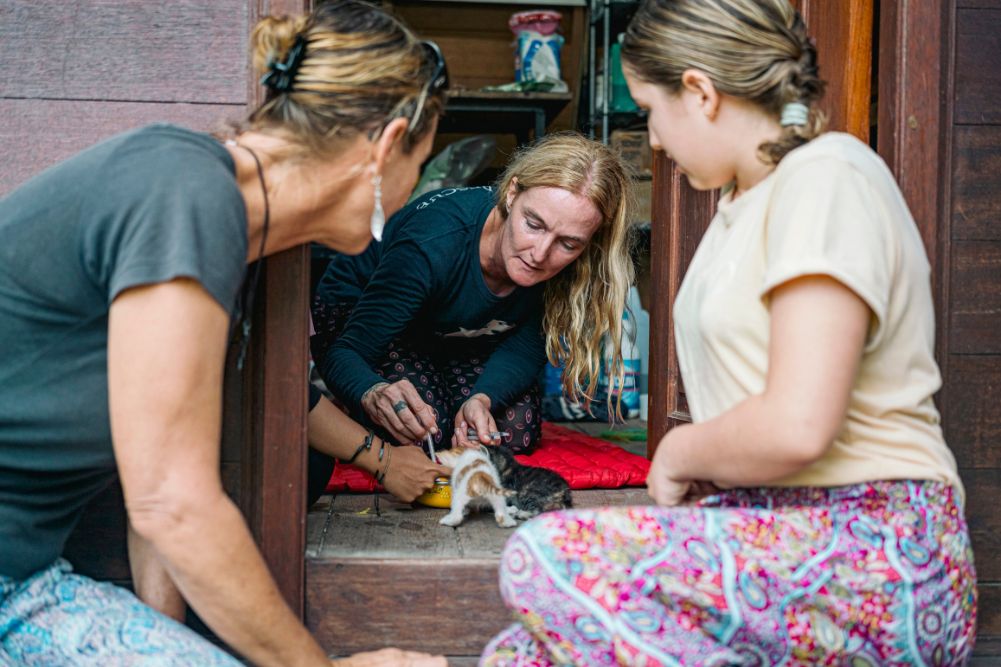Why hemp?
Hemp is a herbaceous annual believed to have originated from the Himalayan region, from where it spread to China and then across the world. The earliest trace of human industry so far discovered is a trace of hemp fabric from ancient Mesopotamia (modern day Iraq), dated at around 8000BCE.
Until the late 19th century, hemp remained the world’s primary fibre crop, chosen for rope and sails due to its strength and used for textiles, paper and medicines. It was grown by George Washington; Queen Victoria took it to relieve menstrual cramps.
As modern technology evolved, hemp found itself in an increasingly embattled position. Steam ships replaced the need for hemp sails and chemical breakthroughs enabled paper to be sourced from wood.
Last century, its image took a nosedive when it became regarded as little more than a weed demonised for the psychoactive effects of some varieties. Fortunately, it’s now being rehabilitated as an important jigsaw piece in the global quest for a more sustainable world. Behind the hype, there is a widespread belief that it has a key role to play.
Prohibition and beyond
By the 1930s, technological advances in manufacturing had made hemp a serious rival to the timber and paper industries. The Hearst newspaper group, which owned timber industry interests, stirred up the public with sensational reports about “marijuana-crazed Negroes” playing “voodoo-satanic” jazz music. The real target of course was the industrial crop.
In 1937, the Marijuana Tax Act passed through the US Congress. This was in effect a prohibition law; taxes and elaborate red tape coupled with serious fines for non-compliance made the crop too risky to cultivate. Strangely, US authorities found themselves temporarily reversing this stance five years later, producing the film Hemp for Victory when a Japanese naval blockade led to a domestic shortage of raw materials.
Prohibition, which later spread across most of the world, has indirectly caused huge environmental damage by preventing an ecologically sound fibre crop from competing in the marketplace. As a policy, it has caused untold damage to forests and the widespread use of synthetic petroleum-derived fibres has resulted in unnecessary industrial pollution.
In the early 90s, the few countries left growing hemp included India, China, Ukraine, Korea and Romania. At that time, following awareness-raising by a handful of activists about its benefits, Western governments started to make a distinction between the low-THC (9-tetrahydrocannabinol) industrial crop and the high-THC psychoactive plant. Today, industrial hemp is being cultivated in many countries.
Closer to home, commercial-scale hemp is now legal to grow in New Zealand and the Australian states Queensland, Victoria, Tasmania, Western Australia and the ACT. In an encouraging recent development, after 13 years of hemp trials New South Wales has dropped its opposition to commercial cultivation. Legislation is about to be introduced to the state parliament and it is anticipated that industrial hemp licenses will soon be issued.
As the crop is significantly more water-efficient than cotton, some believe a large-scale switch to hemp could ease water pressures in the Murray Darling Basin.
Dr Keith Bolton, hemp cultivator and director of Ecotechnology Australia, has been receiving a stream of enquiries from interested farmers around the state and is saving seed in preparation.
Why hemp?
The plant grows from two to four metres in height and the expected hemp yield in the Australian subtropics is around 25 tonnes per hectare. While forest plantations take approximately 20 years to mature, hemp grows to maturity in about four months. Over the long term, a field of hemp will yield nearly four times the harvestable fibre of an equivalent tree plantation.
Hemp shades out weeds and, being largely unaffected by pests, it grows well without the use of pesticides. Its fertiliser and irrigation requirements are also small.
According to Bolton, “Hemp loves water and nutrients but it can provide yields in low-water and [low]-nutrient environments.” He points out that hemp “sequesters the great majority of its nutrients in its foliage, and only a small portion of the nutrients in the stem. If foliar material is re-mulched onto the land, a high portion of nutrients will be recycled.”
As a deep-rooted plant, it can scavenge nutrients and water from a greater depth than most annuals, improving the soil structure.
Being relatively drought-resistant, hemp has the capacity to grow on marginal land unsuited to food production. It has been found to remove heavy metals from contaminated soil and could help reverse salinity in affected areas such as the West Australian Wheatbelt.
Effluent experiments
Acknowledging that industrial hemp is nutrient-hungry, Bolton has identified it as an ideal solution to tackle the large quantities of waste nutrients in the effluent discharges managed by Australia’s local councils. At a recent “mop crop” effluent reuse trial near Bangalow in NSW, a one-hectare sewage treatment plant trial yielded an 18-tonne hemp harvest. This has been followed up with nutrient uptake tests as well as research on groundwater and soil impacts.
In another trial carried out in conjunction with Ecofibre Industries at a pig farm near Lismore, European and Asian hemp varieties were grown together with the fibre crop kenaf. The Asian hemp varieties were found to perform exceptionally well, growing to a height of four metres after 2½ months and, like the other hemp and kenaf crops, not requiring any pesticides. The harvested stalks were later used for pig litter.
Processing and marketing
Processing of the plant usually involves separation of the long outer “bast” fibres and the shorter inner “hurd” fibres from the stalk through a process called retting. Long fibres are used for textiles (eg, in China and Poland) and fine paper (China), while short fibres go into fibreboard (Hungary) and packaging. Other diverse uses include Automotive components (Germany), food and oil (China, Canada) and animal bedding (France and the UK).
One challenge facing the young industry in Australia and Zealand is that processing infrastructure was dismantled in the decades following prohibition and a lot of knowledge has been lost. Restarting an industry from nothing is a significant challenge.
In Australia, for example, the country’s largest hemp business is a Brisbane company called Ecofibre Industries which a couple of years ago built an experimental processing mill near the Queensland town of Dalby. Although it failed to achieve economic viability as a consequence of the low volume of material processed, a lot of useful lessons were learned.
Drought is still a major issue across much of Australia and Ecofibre is working on a relocatable milling system that is capable of being transported to the parts of the country where hemp crops have been successfully planted. The company expects it to be ready for action this year.
At present, much of the local industry involves the extraction of hemp oil for use in cosmetic products. While mulch production requires minimal processing, fibre separation is currently limited by a lack of milling facilities. For farmers thinking about moving into hemp, one reservation may be the lack of a major market. The best support that we can offer the emerging hemp industry is to seek out and buy consumer products made from domestically grown crops.
Exceptionally strong and durable, hemp makes a good choice for clothing. Its long fibres run the length of the stem and stress tests carried out by the outdoor clothing company Patagonia have indicated around eight times the tensile strength and four times the durability of cotton.
“Hemp” clothes are widely available in Australia and New Zealand but anyone not looking carefully at the label may end up with a garment also made from conventionally grown cotton, the world’s number one user of insecticides. Fortunately, 100-per-cent hemp and hemp/organic cotton blends are also available.
Zelfo has arrived
On the edge of Mullumbimby, up the road from Byron Bay in northern NSW, production of a remarkable and unique material is underway.
Zelfo is an ecological and versatile mouldable alternative to wood, plastic and fibreglass. It can be made from any cellulose feedstock and the company’s preferred choice is Australian hemp. It was developed in the 1980s by materials science engineering graduate Martin Ernegg.
In addition to fibre and water, optional additives in the manufacturing of Zelfo include a range of plant-based coloured pigments. This mechanical process involves pressure and heat and all waste materials, including water, can be fed back in a closed loop. According to its creator, Zelfo has the greatest tensile strength of any known sustainably produced material, ranging between 5000 and 10,000 megapascals.
With an emphasis on functionality and aesthetics, Zelfo works best for products with curved surfaces. So far it has been used for musical instruments, homewares, furniture, lampshades, toys, light fittings, jewellery and speakers. The company specialises in contract manufacture involving small-to-medium runs of hundreds or thousands of units.
Hemp building and carbon sequestration
Among hemp’s many end uses, one of the most important is as a building material. After the long fibres found on the outside of the stem have been removed, the remaining woody internal fibre can later be mixed with slaked lime (calcium hydroxide) and water to form hemp bricks or wall structures.
One remarkable quality of this composite material is its rock hardness. Over time, the lime is carbonated as it slowly absorbs atmospheric carbon dioxide (CO2) while the hemp is gradually petrified (turned to stone) by minerals in the lime. Consequently, hemp bricks have a longer lifespan than concrete and do not slowly disintegrate.
Fortunately, hemp construction is not an experimental or speculative technology as it has been tried and tested in France over the past decades. Every year, hundreds of hemp houses are erected in France while others have been built in other parts of Europe and in North America.
Hemp can also be used as a raw material for fibreboard, wallboard and roof tiles. At Washington State University, a manufacturing trial found that hemp fibreboard possessed twice the strength of its wood-based equivalent. A pioneering UK hemp construction company called Lime Technology has recently put a prefabricated hemp panel on the market under the brand name ModCell.
Bolton predicts that hemp masonry will be the first large-scale industry to emerge from the recent NSW moves towards commercial plantings. On the North Coast of NSW, steps towards the establishment of such an industry are already underway.
In Nimbin, a town well known for its annual Mardi Grass festival and non-industrial uses of hemp, Klara Marosszeky of the company Morrowby Futures sees potential for the use of hemp in blocks, sprayed walls, panels and in-fill. Marosszeky has completed a project at the University of NSW to develop a range of lime-based binders and bring hemp construction to a commercially competitive level. A trial hemp wall was recently built at the Nimbin Hemp Embassy.
Perhaps the most dramatic benefits are of an environmental nature. The cement industry has recently admitted its responsibility for about five per cent of the world’s carbon emissions. Cement production involves a chemical reaction that generates copious quantities of CO2 in addition to the emissions from its substantial appetite for fossil fuels. This impact is carried forward into concrete, which uses cement as one of its basic ingredients.
By contrast, the lime involved in hemp construction is produced at a lower temperature and therefore involves fewer CO2 emissions. Lime also absorbs a significant quantity of atmospheric CO2 as carbonation takes place. While lime production is carbon-positive, the hemp plant absorbs large quantities of carbon and as a result the net impact of hemp building is carbon-negative. In other words, the concentration of atmospheric CO2 is reduced with the building of each hemp house.
Hemp foods
Although hemp seed oil contains an ideal blend of Omega 3, 6 and 9 oils for human health, in Australia, unlike in New Zealand, it cannot be sold except as a cosmetic. Australia is now the only Western country where all hemp foods (both the oil and seed) are still illegal to consume. The wide range of hemp foods available includes dairy-free icecream, bread and snack bars. The Chinese eat “pop-hemp” in cinemas instead of popcorn.
Despite the fact that Food Standards Australia New Zealand has already assessed hemp foods and given them the all-clear, up until now politicians have identified two sticking points. They have had concerns about the policing of hemp seed and worry that the legalisation of hemp foods may send the wrong message to young people in relation to drug use. These arguments are undermined by the facts that hemp seed is now being widely distributed for cultivation and only a small minority of hemp cultivars are psychoactive.
As a result of current legislation, an absurd situation exists where Australian companies such as Happy Planet can sell Australian-grown hempseed protein powder to customers in any country other than Australia and New Zealand. Australian dogs are more fortunate than their human owners; after years of negotiation, a company called Dr Skoobies succeeded in obtaining a licence to manufacture its Skoobie Snax hemp dog biscuits.
From an environmental perspective, soya grown in the southern regions of Brazil has been linked to large-scale forest destruction; most of the crop is exported to rich countries for use as animal feed. Fortunately, hemp can be used as a substitute for soya in all its different uses. Adaptable to a far wider variety of growing conditions, it is fortunately free from the antinutritional trypsin inhibitors and oligosaccharides found in soya and could be used to reduce Brazilian deforestation.
Anyone who would like to see a change in the legal status of hemp foods is encouraged to contact their Health Minister — in Australia, Nicola Roxon or in New Zealand, David Cunliffe.
A plant for all purposes
Hemp has an enormous capacity to relieve human pressure on the environment because so many parts of the plant can be used for diverse purposes. The seeds can be crushed as a source of food or to make rainforest-friendly biodiesel. The remaining meal can be fed to people or animals. Even the fibres fulfil different specialist functions according to whether they are sourced from the outer stem or its inner core.
Hopefully, the international groundswell towards legalisation of industrial hemp has started early enough for it to play a major role in successfully tackling the serious environmental challenges that we now face.
Resources
Ecofibre Industries www.ecofibre.com.au
Zelfo Australia www.zelfoshop.com
Happy Planet www.happyplanet.com.au
Lime Technology www.limetechnology.co.uk
ModCell www.modcell.co.uk
The Emperor Wears No Clothes www.jackherer.com/chapters.html
New Zealand Ministry of Health www.moh.govt.nz/moh.nsf
Martin Oliver is a writer and researcher based in Lismore (Northern NSW).







